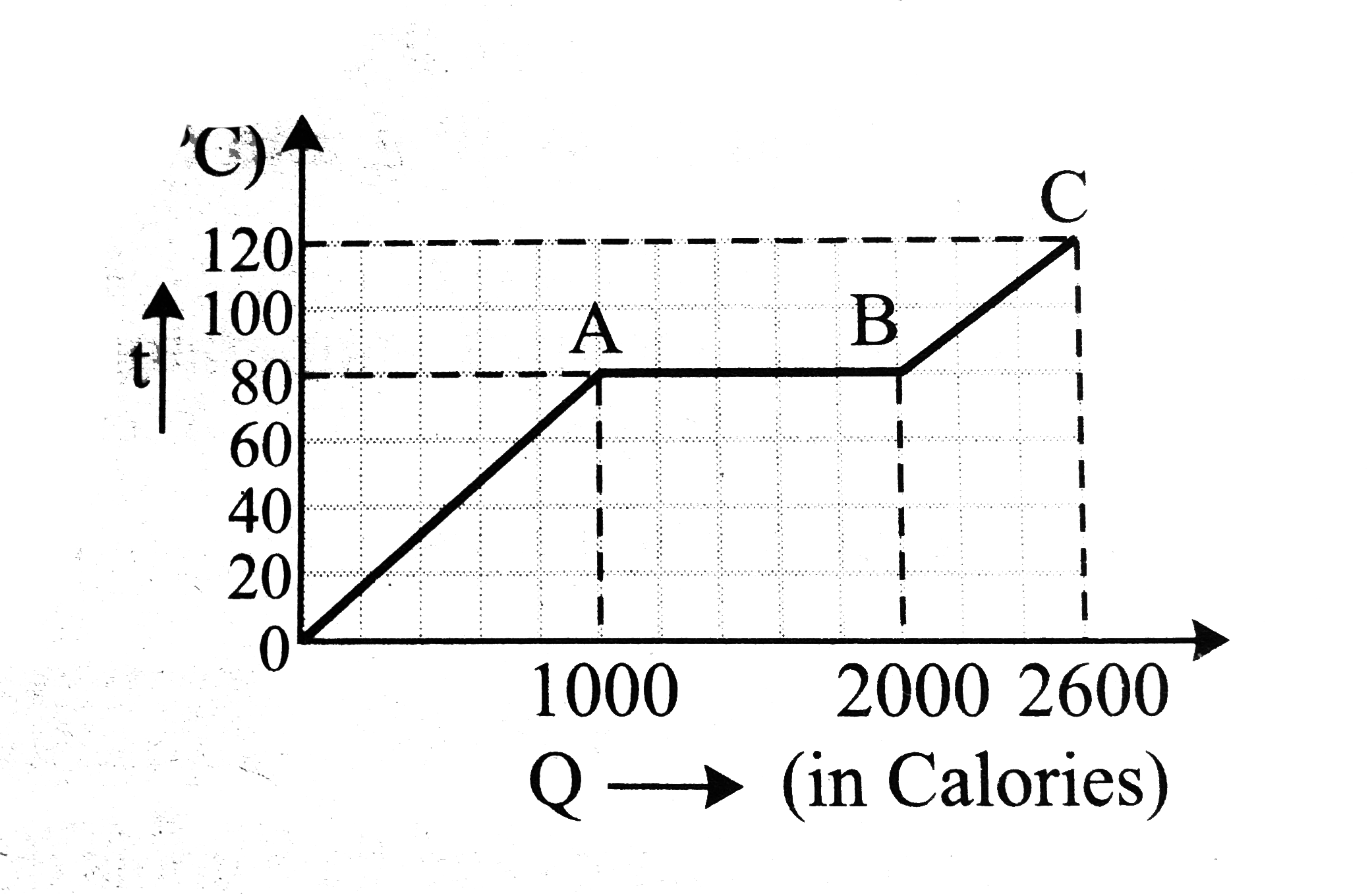A mass m1 of a substance of specific heat capacity c1 at temperature t1 is mixed with a mass m2 of other substance of specific heat capacity c2 at a lower temperature t2. Deduce the expression for the temperature t of the mixture. State the assumption made, if any.
To derive the expression for the temperature t of the mixture when two substances are mixed, we can follow these steps:
Step 1: Understand the Problem
We have two masses m1 and m2 of substances with specific heat capacities c1 and c2, respectively. The first substance is at a higher temperature t1 and the second at a lower temperature t2. We need to find the final temperature t of the mixture.
Step 2: Apply the Principle of Conservation of Energy
In an isolated system, the total heat lost by the hotter substance must equal the total heat gained by the cooler substance. Therefore, the heat lost by the first substance can be expressed as:
Qlost=m1c1(t1−t)
And the heat gained by the second substance is:
Qgained=m2c2(t−t2)
Step 3: Set Up the Equation
Since the heat lost by the first substance is equal to the heat gained by the second substance, we can write:
m1c1(t1−t)=m2c2(t−t2)
Step 4: Expand the Equation
Expanding both sides gives:
m1c1t1−m1c1t=m2c2t−m2c2t2
Step 5: Rearrange the Equation
Rearranging the equation to isolate terms involving t:
m1c1t1+m2c2t2=m1c1t+m2c2t
m1c1t1+m2c2t2=(m1c1+m2c2)t
Step 6: Solve for t
Now, we can solve for t:
t=m1c1t1+m2c2t2m1c1+m2c2
Conclusion
The final temperature t of the mixture is given by:
t=m1c1t1+m2c2t2m1c1+m2c2
Assumption Made
The main assumption made in this derivation is that no heat is lost to the surroundings, meaning the system is perfectly insulated.
---
We have two masses m1 and m2 of substances with specific heat capacities c1 and c2, respectively. The first substance is at a higher temperature t1 and the second at a lower temperature t2. We need to find the final temperature t of the mixture.
In an isolated system, the total heat lost by the hotter substance must equal the total heat gained by the cooler substance. Therefore, the heat lost by the first substance can be expressed as:
Qlost=m1c1(t1−t)
And the heat gained by the second substance is:
Qgained=m2c2(t−t2)
Since the heat lost by the first substance is equal to the heat gained by the second substance, we can write:
m1c1(t1−t)=m2c2(t−t2)
Expanding both sides gives:
m1c1t1−m1c1t=m2c2t−m2c2t2
Rearranging the equation to isolate terms involving t:
m1c1t1+m2c2t2=m1c1t+m2c2t
m1c1t1+m2c2t2=(m1c1+m2c2)t
Now, we can solve for t:
t=m1c1t1+m2c2t2m1c1+m2c2
The final temperature t of the mixture is given by:
t=m1c1t1+m2c2t2m1c1+m2c2
The main assumption made in this derivation is that no heat is lost to the surroundings, meaning the system is perfectly insulated.
Topper's Solved these Questions
- CALORIMETRYBOOK - ICSECHAPTER - CALORIMETRYEXERCISE - EXERCISE-11(A) (MULTIPLE CHOICE TYPE)
3 Videos
- CALORIMETRYBOOK - ICSECHAPTER - CALORIMETRYEXERCISE - EXERCISE-11(A) (NUMERICALS)
13 Videos
- CALORIMETRYBOOK - ICSECHAPTER - CALORIMETRYEXERCISE - EXERCISE-11(B) (NUMERICALS)
15 Videos
- WORK ENERGY AND POWERBOOK - ICSECHAPTER - WORK ENERGY AND POWEREXERCISE - EXERCISE-2(C ) NUMERICALS
6 Videos
- CURRENT ELECTRICITYBOOK - ICSECHAPTER - CURRENT ELECTRICITYEXERCISE - EXERCISE-8(C) NUMERICALS
35 Videos
Similar Questions
The specific heat of an ideal gas varies with temperature T as
View SolutionA liquid of mass m and specific heat c is heated to a temperature 2T. Another liquid of mass m/2 and specific heat 2 c is heated to a temperature T. If these two liquids are mixed, the resulting temperature of the mixture is
View Solution
Knowledge Check
Which one of the following substances has highest specific heat capacity at room temperature and atmospheric pressure ? a) Water b) Ice c) Aluminum d) Mercury
AWaterBIceCAluminiumDMercury
What mass of a liquid A of specific heat capacity 0.84 J g−1K−1 at a temperature 40∘C must be mixed with 100 g of a liquid B of specific heat capacity 2.1 J g−1K−1 at 20∘C, so that the final temperature of mixture becomes 32∘C ?
View SolutionThree liquids with masses m1,m2,m3 are throughly mixed. If their specific heats are c1,c2,c3 and their temperature T1,T2,T3, respectively, then the temperature of the mixture is
View SolutionEqual volumes of three liquids of densities ρ1,ρ2 and ρ3, specific heat capacities c1,c2 and c3 and temperatures t1,t2 and t3, respectively are mixed together. What is the temperature of the mixture? Assume no changes in volume on mixing.
View SolutionWrite the expression for the heat energy Q received by m kg of a substance of specific heat capacity c J kg−1K−1when it is heated through Δt∘C.
View SolutionIn variation of specific heat capcity of a substance with temperature is given by C=A+BT2, where A and B are constnts and T is the temperature, Calculate the mean specific heat in a temperature range T = 0 to T =T and the specific heat at the mid-point T/2.
View SolutionA solid copper sphere of density ρ, specific heat c and radius r is at temperature T1. It is suspended inside a chamber whose walls are at temperature 0K. What is the time required for the temperature of sphere to drop to T2? Take the emmissivity of the sphere to be equal to e.
View Solution
A substance is in the solid form at 0∘C. The amount of heat added to this substance and its temperature are plotted in the following graph. If the relative specific heat capacity of the solid substance is 0.5, find from the graph (i) the mass of the substance, (ii) the specific latent heat of the melting process and (ii) the specific heat of the substance in the liquid state.
Specific heat capacity of water =1000cal/kg/K
View Solution
